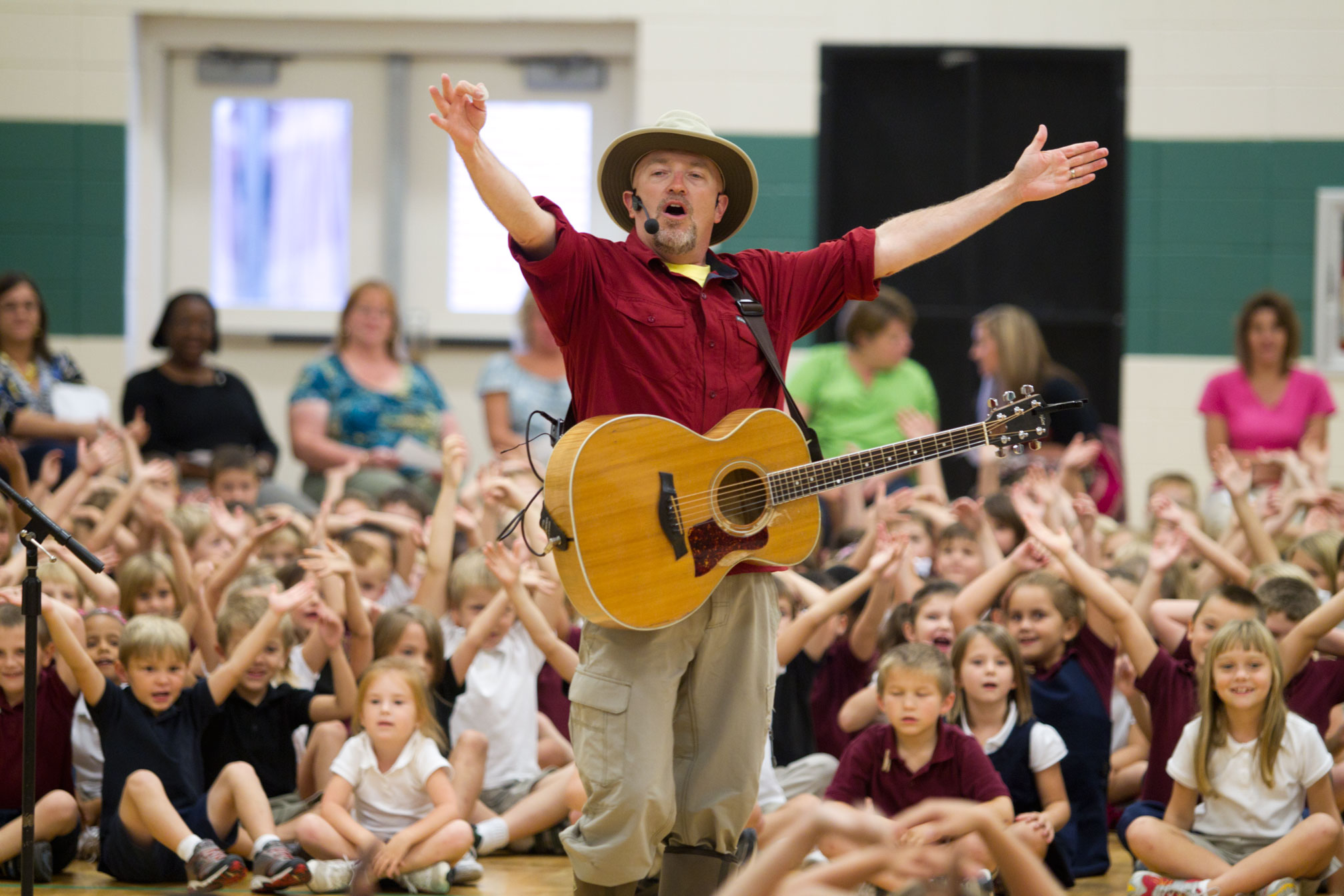Continuing a two-year tradition, children’s musician Roger Day has been busy spreading Marsh Madness to elementary schools throughout coastal Georgia.
Georgia Sea Grant and the Savannah Music Festival partnered to bring Day’s educational performance about the state’s coastal habitats and creatures to classes from 29 different elementary schools in Chatham, Effingham and Bryan counties. Last month, more than 7,000 children bounced along with Day as he has led them in songs about ghost crabs, marsh mud and nesting sea turtles. Day also presented a special performance for patients at Backus Children’s Hospital. A multimedia presentation is available online at http://photo.alumni.uga.edu/multimedia/MM00048_marshrd/.
In 2009, the two organizations co-commissioned Day to compose a collection of educational songs featuring the Georgia coast for an elementary school audience.
“Music has an almost magical way of helping people remember things,” said David Bryant, assistant director for Georgia Sea Grant. “We figured that a great way to teach schoolchildren the value of Georgia’s coastal resources was to create songs that had ocean literacy built into them.”
Day’s energetic live performances were not only a hit with students, but with educators as well.
“Having lived on one of Georgia’s barrier islands, I was impressed with the curriculum content and the subject matter covered in Marsh Madness,” said Kristen Richards, principal of Sand Hill Elementary School. “It’s exciting to have this educational tool in which everything comes full circle with the curriculum, lesson plans and songs.”
To help the children understand the ecosystem topics presented in the songs, Georgia Sea Grant and UGA’s Marine Extension Service created a study guide for teachers to accompany the performance, both based on the state science teaching standards. “My students love the music, and I love the graphics and maps,” said Tony Miller, a third grade teacher at Isle of Hope Elementary School. “I will keep the Marsh Madness educational information and incorporate it into future lesson plans.”


